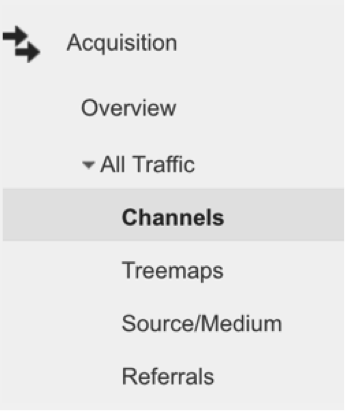If the internet were a physical space, it’d look something like Best Buy on Black Friday. It’s a madhouse chockfull of people (and even more information). Every second information is being shared, posted, searched, and downloaded. Just look at Internet Live Stats, they show exactly how quickly the internet moves per second. According to their research, over 60,000 Google searches are performed every second. That means that any content you’ve created could be lost in the internet blackhole. Unless, of course, your content goes viral.
Viral posts aren’t always a result of good luck—there are ways you can increase the odds that your content will go viral. Read on to learn some of the ways you can increase your chances.
Understand Your Audience
You can’t create content without knowing your audience, right? To create shareable content, you need to truly understand who your audience is. Unfortunately, your audience isn’t going to tell you who they are—you’ll need to do some digging yourself.
An excellent place to start is Google Analytics. You’re able to view who your audience is as well as where they came from. There are two sections within Google Analytics that are helpful for understanding your audience: Audience and Acquisition sections. I’ll quickly run through both so you have an idea of where to start.
Audience Section
In this section, you’ll get tons of vital information about your visitors. Look at what you can find under the “demographics” tab of the Audience section:
But how is this information helpful for your content? Knowing the age and gender of your audience helps you decide on the tone of your content. Age is also a factor when deciding which social media platform to cater to.
Acquisition Section
Ever wonder where your site’s visitors come from? With the Acquisition section of Google Analytics, you’re now able to see where your audience came from. From the Acquisition section, choose “all traffic” and then “channels.”
With this information, you can focus on creating content specific to each platform. You’ll also understand which of the platforms are driving the most traffic to your content or website. Once you’ve discovered who your audience truly is, you’ll be able to create content that’s specifically tailored to them.
Create Engaging and Purposeful Content
This may be a no-brainer. But with all the garbage and fake articles that are circulating the internet lately, it must be reiterated. Users look for quality content—and they’re more willing to share the articles they believe serves a purpose or provides valid information.
Here are some things to think about when you’re creating content:
- How will this benefit my readers?
- Does this provoke emotion from the audience?
- Is this information new or controversial?
Repurpose Your Content
Did you know 65% of people are visual learners? Chances are you’re creating written content and expecting it to be shared by the masses. While articles are still being shared on Facebook, nearly 59% of sharers don’t even read the article—they simply share based on the headline itself. What’s the point of sharing your information if no one is reading it? That’s why it pays to repurpose your content in a way that most of the population will be willing to read—and understand.
Here are some great ways to repurpose your content:
- Create an infographic.
- Shoot a video that highlights the key elements of your piece.
- Go live with a helpful webinar that allows users to ask questions.
Reach Out to Others
Think about all the sources you use within a piece—wouldn’t it be great if those sources shared your content? Let those sources know how much they influenced your article, and then see if they’d be willing to share with their audience as well. Exposure coming from a trusted source will boost your credibility.
If you’re on any social media platform, chances are you’re connected with people in your industry. Look at what they’re sharing—is it relevant to the content you’re creating? If your content is top-notch, why not reach out to one of them and ask them to share it with their audience? Most likely they’ll be happy to help you out—and remember to return the favor!
Focus on the Technical
You’re focused on creating awesome content—so you’re not caught up with the technical aspects. But you’d be surprised at how the technical pieces of your content affect whether you’ll go viral.
According to Neil Patel, longer blog posts get more traffic. Around the 3,000-word mark is the sweet spot for blog posts and other written content. Think about this when you’re crafting your content.
Include images and examples to give your users the most in-depth article possible. Don’t forget that most people are visual learners! Also, remember that your content could potentially show up across all social media platforms (hopefully!). Images are great for grabbing the attention of users—incorporate them whenever possible.
Another factor to consider is the day and time you post your content. Each social media platform will have varying times—for example, the best time to post to Facebook is after 1 p.m. on Thursdays and Fridays. Do your research, see which times and days are the best for each platform. This way, you’ll be sure to reach as many eyes as possible!
The Takeaway
Nearly every marketer’s dream is to have their content go viral, and if you’re like many other marketers out there, you think going viral is the result of sheer luck. While it does require a bit of luck, there are ways you can up the ante. The most important factor that contributes to a viral post is the ability to inform your audience. If you’re churning out quality, engaging posts that provide accurate, helpful information, you’ll be rewarded with plenty of shares.
How do you ensure that your posts go viral? Do you focus on any particular analytics? Let us know your thoughts and about your experiences in the comment section below.
Feature Image Credit: woorkup.com



